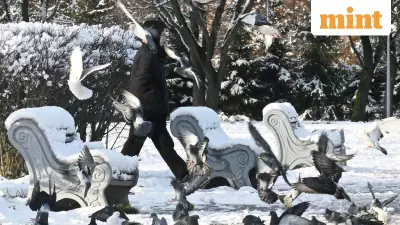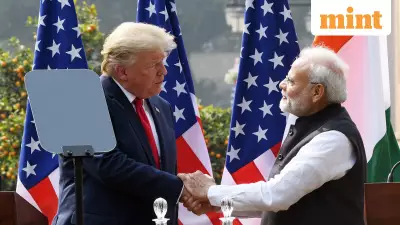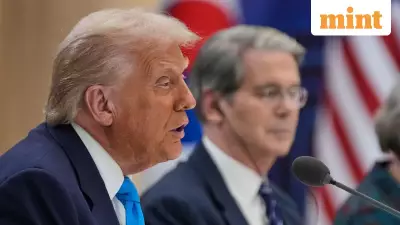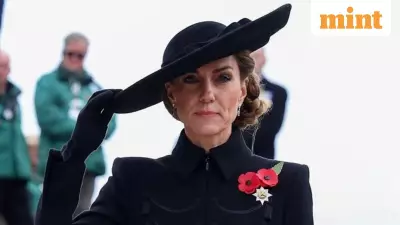
President Donald Trump's persistent demands for lower interest rates are facing an unexpected hurdle that goes beyond current Federal Reserve Chair Jerome Powell. Internal divisions within the central bank are creating unprecedented challenges that could undermine Trump's economic agenda even after he appoints a new Fed chair next year.
The Unseen Battle Inside Federal Reserve
President Trump publicly stated this week that he expects significantly lower interest rates once he can install a new Federal Reserve chair in May 2025. However, growing opposition to a December rate cut within the central bank suggests he might not get his way regardless of who occupies the leadership position.
Chair Jerome Powell is facing more internal resistance than to any other decision in his nearly eight-year tenure, with deep divisions emerging ahead of the December policy meeting. This internal conflict threatens to end decades of consensus-driven policymaking at the world's most influential central bank.
Why Changing Fed Chair Might Not Matter
The fundamental problem for Trump's rate cut ambitions lies in the Federal Reserve's structure. The chair serves more as a quarterback than a dictator, needing to build consensus among the 12-member Federal Open Market Committee. This body includes seven Fed governors appointed by the U.S. president and five rotating regional Fed bank presidents.
Fed governor Christopher Waller emphasized this dynamic during a Monday speech in London, comparing the chair's role to a football quarterback who must call plays that the entire team will execute. "If the chair proposes an action that everybody thinks is nuts, it's not going to happen," Waller stated bluntly.
The regional Fed presidents provide an apolitical buffer since they aren't direct political appointees and often have no partisan background. Currently, a sizable contingent of these bank presidents, mostly from regional Federal Reserve banks, have made clear their opposition to a third consecutive rate cut in December.
Breaking Decades of Consensus
For more than 30 years, Fed chairs have worked to build broad consensus around rate decisions, with narrow majority votes being exceptionally rare. Since 1993, there have been only five meetings with three dissents, and no meeting with four dissents since 1992.
December could see three or more dissenting votes whether Powell elects to pause or cut rates. This breakdown in the traditional consensus-building process represents a significant shift in Fed culture that began after 1994, when Chairman Alan Greenspan was caught off-guard by colleagues wanting faster rate increases.
Krishna Guha of investment bank Evercore ISI, a former New York Fed executive, warned that "the process seems to be breaking apart, and we risk moving next year into an environment with a very deeply divided committee." He described the current situation as a dress rehearsal for 2026.
Economic Policy Dilemma and Political Pressures
The divisions stem from Trump's policies on trade and immigration, which appear to be simultaneously weakening job growth and pushing up prices. This creates a challenging situation for the Fed, as it's difficult to address both problems with a single policy tool.
After delivering quarter-point cuts in September and October, bringing the rate target range to 3.75% to 4%, some Fed officials want more evidence that economic conditions are worsening or inflation is improving before cutting further. Some fear inflation will run closer to 3% than the Fed's 2% goal due to expected solid economic activity next year.
The situation has attracted intense political pressure, with Trump publicly pressing Treasury Secretary Scott Bessent to "work on" Powell to lower rates. Administration officials and allies have increasingly argued that the Fed itself has become political, a viewpoint that could justify wholesale changes to the institution.
Potential Consequences for Fed Independence
Fed veterans worry that if Trump or a new chair concludes that simply replacing Powell won't satisfy low-rate demands, they might take more aggressive steps to curb the central bank's independence. Once Trump appointees form a majority of the Fed's seven-person board, they could theoretically dismiss any of the 12 Fed presidents for any reason.
Trump is already seeking to remove Fed governor Lisa Cook, citing alleged financial wrongdoing that Cook maintains are baseless. The Supreme Court is set to consider her case in January, with a ruling in Trump's favor making it easier to replace other governors.
Donald Kohn, a former Fed governor, expressed serious concerns about potential lasting damage to the institution. "I love this institution, and I worry about lasting damage on the staff level, or firing presidents because you disagree with them," Kohn stated.
The coming months will test whether decades of Fed independence and consensus-driven policymaking can withstand the combined pressures of internal divisions and external political demands.





